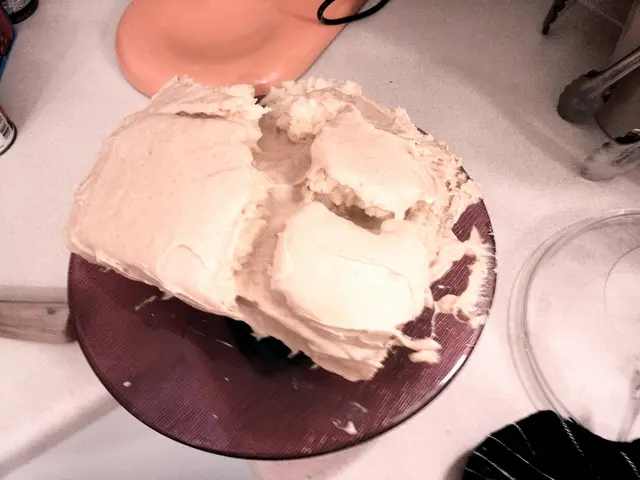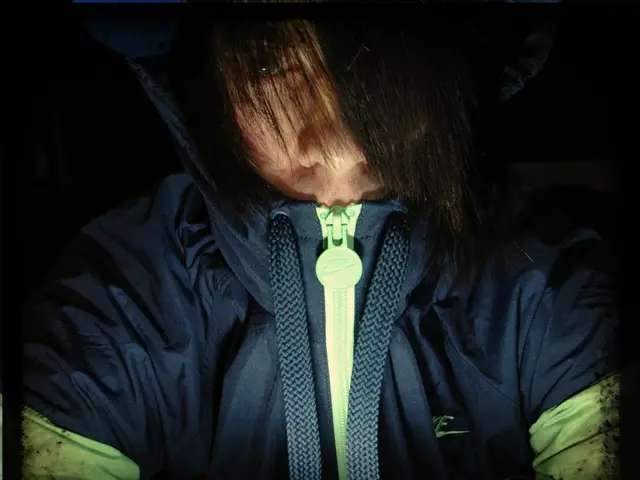Rapid, severe rosacea: Understanding causes, symptoms, and remedies
Layman's Guide to Rosacea Fulminans
Rosacea Fulminans, a rare and severe variant of rosacea, is known for its sudden emergence and intense symptoms that primarily affect the central face area, including the chin, cheeks, and nose. The condition usually presents as inflamed, painful, and swollen bumps that can merge together, departing from the usual rosacea or acne symptoms, which are milder and come on gradually.
Rosacea Fulminans predominantly targets women of childbearing age, yet its underlying cause remains elusive. Some recent research suggests a possible link between the condition and certain conditions, such as inflammatory bowel disease and pregnancy. People who have already experienced some form of rosacea may also be more susceptible to Rosacea Fulminans.
Possible trigger factors for Rosacea Fulminans include emotional stress, hormonal fluctuations, and certain medications. Furthermore, a 2021 literature review indicates that certain dietary factors might cause or intensify rosacea symptoms, although this information is not specifically related to Rosacea Fulminans. Potential dietary triggers include alcohol, spicy foods, cinnamaldehyde-containing foods (chocolate, tomatoes, citrus fruits), histamine-rich foods (wine, aged cheese, processed meats), and hot drinks. It's important to note that the impact of these triggers can differ significantly from person to person.
Rosacea Fulminans may display several symptoms:- sudden onset of severe, localized skin color changes such as redness- painful pustules, papules, and nodules that can merge- facial swelling and inflammation- flushing and blushing- stinging and burningSome individuals might experience ocular symptoms, such as dry, burning, or itching eyes and light sensitivity. Systemic symptoms like fever and fatigue are rare.
Treatment for Rosacea Fulminans might include oral isotretinoin, corticosteroids (oral or topical), and combinations of medical treatments and lifestyle changes. A 2016 case study suggested that the use of antibiotics in combination with corticosteroids and lifestyle modifications could be effective in addressing symptoms.
Managing stress through techniques like mindfulness meditation, deep breathing exercises, regular exercise, and journaling might contribute to managing the condition. Dietary changes, such as reducing alcohol intake, can also be beneficial. Adopting gentle skin care practices is also recommended to prevent flare-ups.
If you experience symptoms that go beyond typical rosacea or acne, sudden onset of symptoms, symptoms that persist or worsen despite trying over-the-counter medications or rosacea therapies, or notice eye irritation, inflammation, or systemic symptoms, it's advisable to consult a dermatologist or another healthcare professional. Prompt diagnosis and treatment can help manage symptoms effectively, reducing the risk of complications like scarring and infections. Immediate attention can also help address any emotional distress and improve overall quality of life.
- In the field of dermatology, Rosacea Fulminans, a severe and sudden variant of rosacea, is a medical-condition that primarily affects the skin, manifesting as inflamed, painful, and swollen bumps on the central face area.
- Although the exact cause of Rosacea Fulminans is not fully understood, some research links it to chronic-diseases such as inflammatory bowel disease and pregnancy, and it may be more prevalent in women of childbearing age.
- Health-and-wellness practices, such as stress management through meditation, deep breathing, exercise, and journaling, as well as dietary changes like reducing alcohol consumption, may help in managing Rosacea Fulminans symptoms.
- In case of symptoms that are severe, sudden, or persist despite trying over-the-counter medications or rosacea therapies, professional consultation with a dermatologist or healthcare provider is crucial for timely diagnosis, treatment, and ensuring effective health-and-wellness management.








